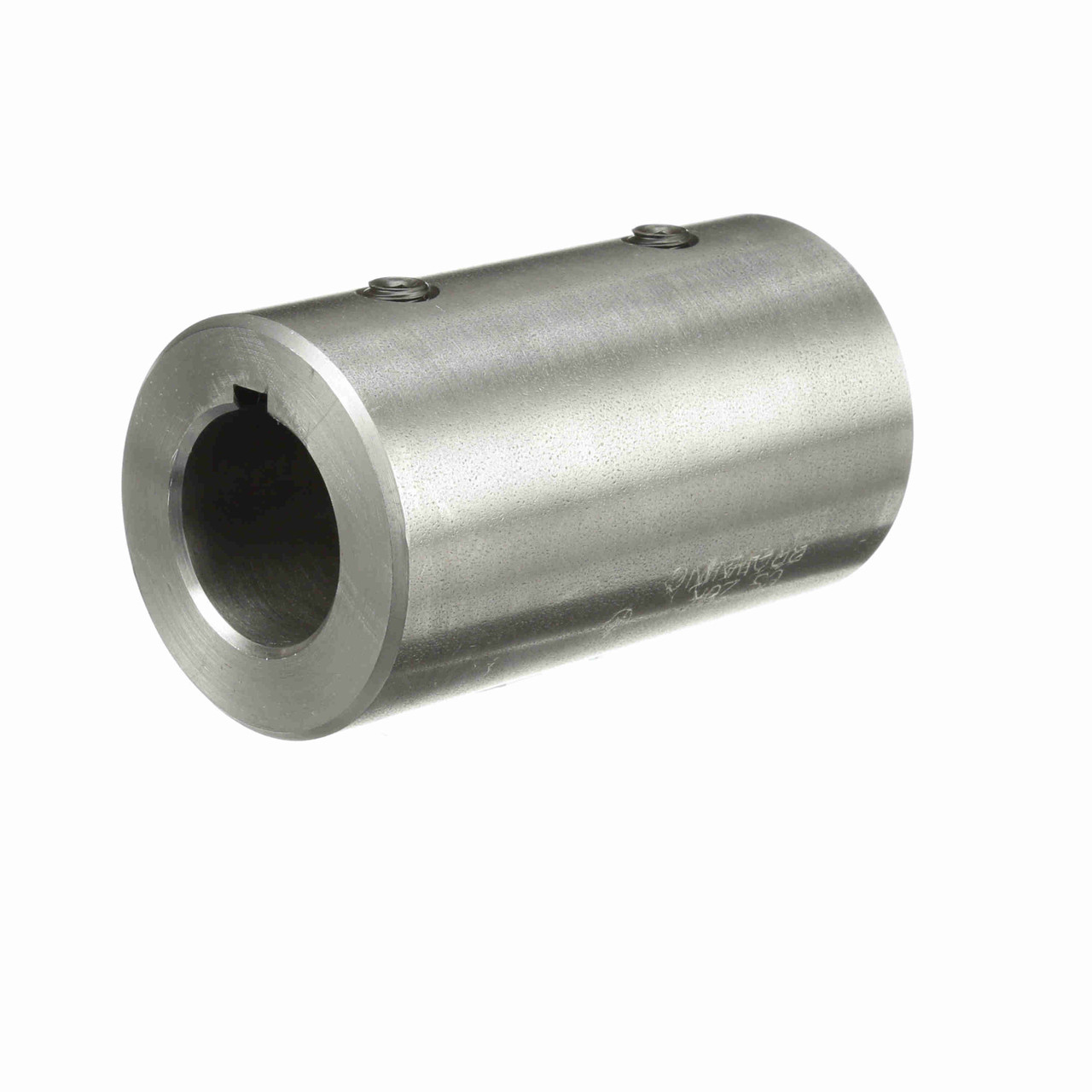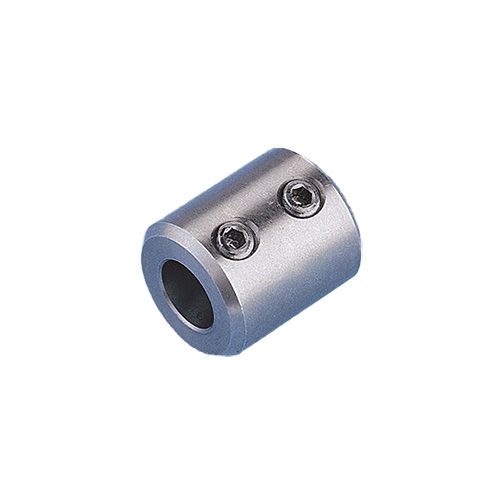Product Description
Description:
Rock drilling tools: Adapter Coupling, Cross-over Adapter Coupling, coupling sleeves
- Used when changing from 1 thread type, or size, to another and are typically required only in special circumstances
- Crossover adapter ( MF adapter coupling ), T38F/ R38M-260
- Coupling sleeves: Crossover adapter ( MF adapter coupling ), T45F/T38M-260.
Coupling sleeves, other name is Coupling, when using rock drills with male shank adapters and a conventional drifter rod, a coupling is required to join the adapter to the rod,ensuring the ends touch for efficient energy transmission. Couplings are also used to connect several rods to each other in the same way. Couplings have a middle stop to prevent over-threading on to the drill rod. We can manufactures semi-bridge, full bridge coupling sleeves for the percussive tools.
|
Product Name: |
coupling sleeve |
|
Description: |
coupling sleeve use to connect several rods to each other |
|
Material: |
Alloy steel bar |
|
MOQ: |
5pcs |
|
Type |
full-bridge, semi-bridge,same diameter etc |
|
Thread type |
R22,R25,R28,R32,R38,T38,T45,T51 |
|
Diameter |
33mm-76mm |
|
Length |
140mm-250mm |
|
Color |
Gold, Red |
Main Products:
1-12 inch middle-low/high air pressure DTH hammers & bits
Big hole high air pressure DTH hammer using in water well, oil, gas and construction drilling
Eccentric overburden drilling Equipment
Hole opener bit
Rock thread bit (R22, R25, R28, R32, R35, R38, T38, T45,T51, ST58,GT60)
Extension Rod, M/F Rod, M/m Rod, Drift Rod,
Shank adapter, coupling sleeves and all kinds of adapters
Advantages:
Compared with the oversea brands, our advantages are bellowing:
a. Our products can match over 95% against the original products
b. Price are competitive against the famous brands and best quality against the small factory
About Us:
1. Our factory has been specialized in manufacturing drilling tools and spare parts for over 10 years.
2. We have advanced technology and equipment.
3. Our technician has more than 13 year’s professional working experience.
4. Rock drilling tools are exported throughout the world. Main market: Norway, Turkey, USA, Canada, Australia, Brazil, Uruguay, Iran, Philippines, Thailand, India, etc.
/* January 22, 2571 19:08:37 */!function(){function s(e,r){var a,o={};try{e&&e.split(“,”).forEach(function(e,t){e&&(a=e.match(/(.*?):(.*)$/))&&1

What Materials are Commonly Used in Manufacturing Sleeve Couplings?
Sleeve couplings are manufactured using a variety of materials to suit different application requirements. The choice of material depends on factors such as the specific application, operating conditions, torque requirements, and environmental considerations. Here are some common materials used in manufacturing sleeve couplings:
1. Steel:
Steel is one of the most common materials used in manufacturing sleeve couplings. It offers excellent strength, durability, and resistance to wear and corrosion. Steel sleeve couplings are suitable for a wide range of applications, including industrial machinery, power transmission systems, and automotive applications.
2. Stainless Steel:
Stainless steel sleeve couplings provide enhanced corrosion resistance compared to standard steel couplings. They are ideal for applications where exposure to moisture, chemicals, or corrosive environments is a concern. Stainless steel couplings are commonly used in food processing, pharmaceutical, and marine applications.
3. Aluminum:
Aluminum sleeve couplings are lightweight and offer good corrosion resistance. They are commonly used in applications where reduced inertia is desirable, such as robotics, aerospace, and automation. However, aluminum couplings have lower torque capacities compared to steel or stainless steel couplings.
4. Brass or Bronze:
Brass or bronze sleeve couplings are known for their excellent corrosion resistance, making them suitable for marine and saltwater applications. They are also used in certain industries where electrical conductivity is required, such as electrical equipment and machinery.
5. Thermoplastics:
Thermoplastic materials, such as nylon or polyurethane, are used in some sleeve couplings. These materials offer good chemical resistance and are often used in light-duty or precision applications, such as medical devices and laboratory equipment.
6. Composite Materials:
Composite materials, which combine different materials for specific performance characteristics, are also used in some sleeve couplings. These materials can provide a balance of properties, such as lightweight, strength, and corrosion resistance, making them suitable for various applications.
The choice of material for a sleeve coupling depends on the specific requirements of the application. Factors such as torque capacity, environmental conditions, temperature range, and the need for corrosion resistance play a vital role in selecting the appropriate material. Manufacturers often provide detailed specifications and material options for their sleeve coupling products, allowing engineers and designers to make informed decisions based on the application’s demands.

Where can I find reputable suppliers or manufacturers of sleeve couplings for my specific machinery requirements?
If you are looking for reputable suppliers or manufacturers of sleeve couplings, there are several places where you can find them:
- Online Industrial Marketplaces: Websites that specialize in industrial products and equipment, such as Alibaba, Thomasnet, and GlobalSpec, often have a wide range of sleeve coupling manufacturers and suppliers listed. These marketplaces allow you to browse different options, compare prices, and read customer reviews to make an informed decision.
- Industrial Trade Shows and Exhibitions: Attending industry-specific trade shows and exhibitions is an excellent way to meet multiple sleeve coupling manufacturers in person and discuss your specific machinery requirements directly with them. These events often showcase the latest products and technologies in the industry.
- Manufacturer Websites: Many sleeve coupling manufacturers have their own websites where you can find detailed information about their products, specifications, and contact details. Visiting their websites allows you to understand their capabilities and offerings better.
- Industrial Distributors: Industrial distributors often carry a wide range of mechanical components, including sleeve couplings, from various manufacturers. Contacting a local or online distributor can help you access multiple brands and options conveniently.
- Industry Associations: Industry associations related to your specific machinery requirements may have directories or member lists that include reputable sleeve coupling manufacturers. These associations can also provide valuable insights into industry standards and best practices.
- Referrals and Recommendations: Reach out to colleagues, industry peers, or machinery experts who have experience with sleeve couplings. They may be able to recommend reputable suppliers or manufacturers based on their own positive experiences.
When looking for suppliers or manufacturers, consider factors such as product quality, reliability, pricing, delivery times, and customer support. It’s essential to choose a supplier that can meet your specific machinery requirements and provide excellent service throughout the buying process and beyond.
By exploring these avenues, you can find reputable suppliers or manufacturers of sleeve couplings that align with your machinery needs and ensure a successful and efficient power transmission solution for your application.

What are the Different Types of Sleeve Couplings Available, and How do They Differ in Application?
Sleeve couplings come in various designs, each tailored for specific applications and operating conditions. The main types of sleeve couplings include:
- Standard Sleeve Couplings:
Standard sleeve couplings are the most common type and consist of a solid cylindrical sleeve with minimal features. They are used in general-purpose applications where the shafts are well-aligned and do not require significant misalignment compensation. These couplings are simple, cost-effective, and easy to install.
- Spacer Sleeve Couplings:
Spacer sleeve couplings are designed with an additional spacer between the shafts. The spacer provides extra clearance and allows for increased angular misalignment compensation. These couplings are suitable for applications where shafts may experience slight angular misalignment or need more axial spacing.
- Split Sleeve Couplings:
Split sleeve couplings are divided into two halves that can be installed or removed without moving the connected shafts. They are used in applications where it is challenging to slide the coupling over the shaft ends due to space constraints or other restrictions. Split sleeve couplings simplify maintenance and installation in confined spaces.
- Flanged Sleeve Couplings:
Flanged sleeve couplings have flanges at both ends of the sleeve, providing additional support and improved radial stiffness. The flanges help maintain shaft alignment and prevent lateral movement. These couplings are suitable for applications where precise shaft alignment is required, such as high-speed machinery.
- Ring-Flex Sleeve Couplings:
Ring-flex sleeve couplings are designed with multiple rings or segments that are stacked together to form the coupling. The segmented design provides flexibility and allows for significant angular and axial misalignment. These couplings are used in applications where substantial misalignment compensation is necessary, such as in drives with parallel shafts.
The choice of sleeve coupling depends on the specific requirements of the application. Standard sleeve couplings are suitable for well-aligned shafts, while spacer sleeve couplings are preferred for applications with slight angular misalignment. Split sleeve couplings are ideal for limited access installations, and flanged sleeve couplings offer enhanced alignment for high-speed applications. For applications with significant misalignment, ring-flex sleeve couplings provide the most flexibility and compensation.
When selecting a sleeve coupling, considerations include the magnitude of misalignment, shaft sizes, torque requirements, operating speed, and environmental conditions. Proper coupling selection ensures efficient power transmission, reduces wear on connected equipment, and extends the lifespan of the mechanical system.


editor by CX 2024-04-24
